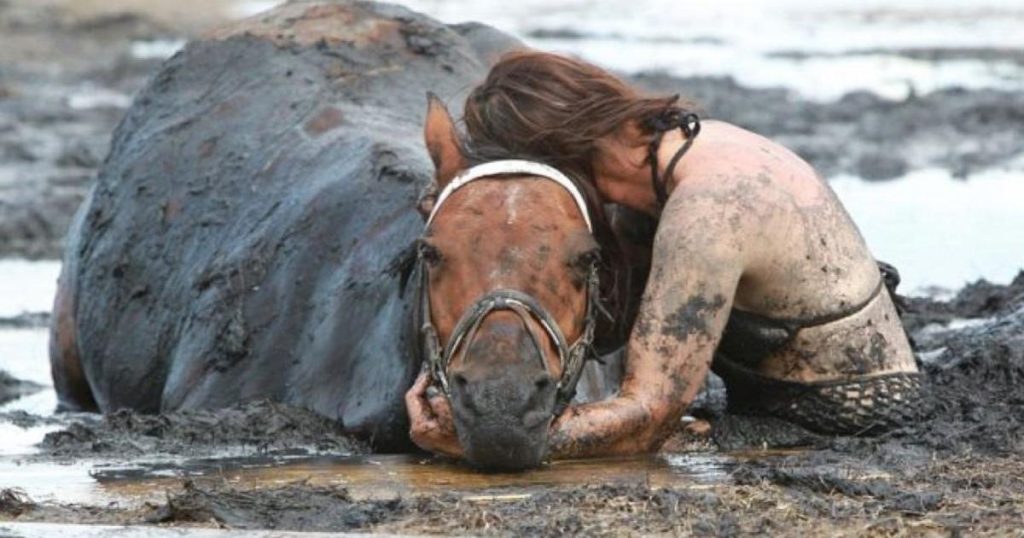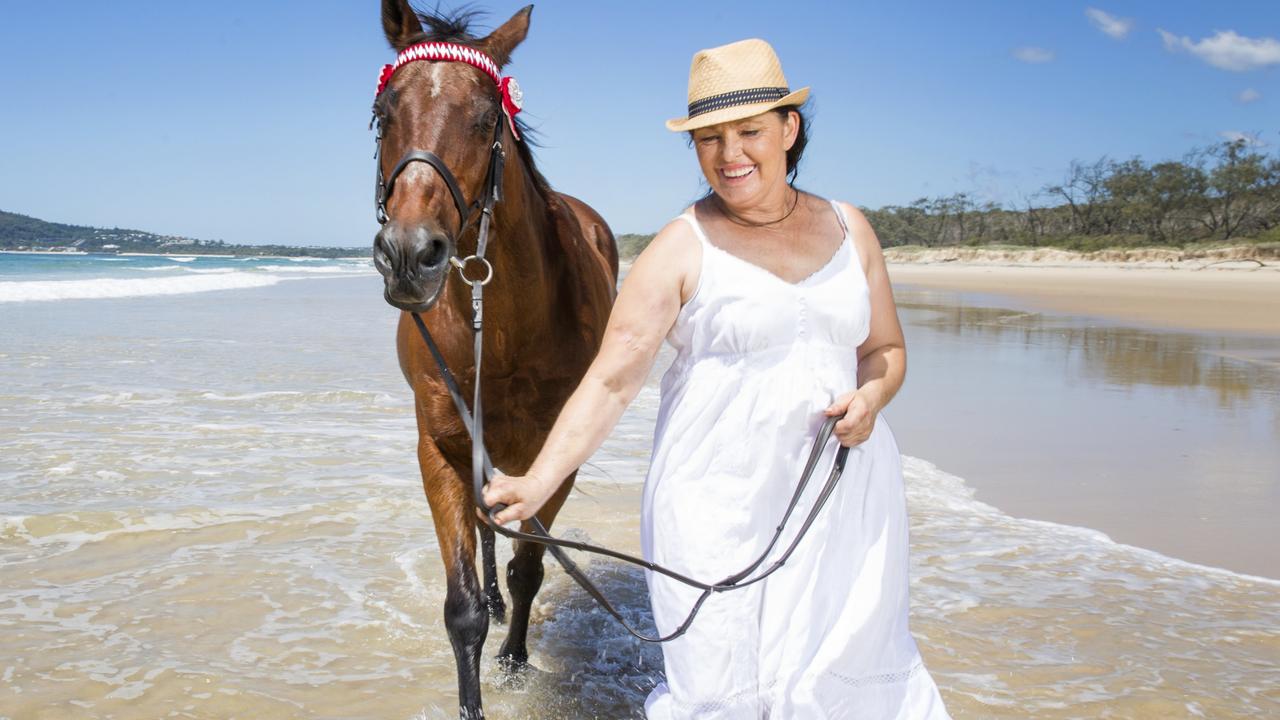For 3 hours, woman desperately holds her trapped horse – then a farmer turns up at the last second

On a Sunday afternoon in Geelong, Australia, a heart-pounding incident unfolded that highlighted both the unpredictability of nature and the incredible bond between humans and animals. Nicole Graham, an experienced equestrian, was riding her horse, Astro, on the beach near Melbourne, enjoying the peaceful surroundings. Little did she know, what started as a serene ride would quickly turn into a life-or-death struggle.
A Sudden Danger: Trapped in the Mud
As Nicole and her daughter rode along the beach, the horses encountered soft, muddy terrain that suddenly gave way beneath them. While Nicole was able to help her daughter and her horse escape, her own horse, Astro, found himself stuck deep in the mud. The situation rapidly escalated as Astro’s body became submerged up to his neck in the muck. The horse was trapped in an increasingly perilous position, and Nicole’s immediate fear was that Astro would suffocate if he couldn’t be freed in time.
The rising tide only worsened the situation, threatening to engulf the trapped horse completely. With the mud acting like quicksand, Astro’s movements became more frantic, and every slight movement caused him to sink deeper. For three hours, Nicole stood by her beloved horse, doing everything in her power to keep him calm and hopeful.

The Desperate Wait: A Lifesaving Battle
As time passed, the situation grew more dire. Astro’s energy was depleting, and with the tide approaching, Nicole knew they had little time left to act. Astro, weakened by panic, fatigue, and the rising water, was in immediate danger. Nicole kept her composure as best as she could, speaking softly to Astro and trying to soothe him despite the overwhelming circumstances.
Rescue workers and a veterinarian eventually arrived at the scene, and the rescue operation was quickly underway. To prevent Astro from exerting more energy and to keep him calm, the veterinarian administered a sedative. Despite their best efforts, the team quickly realized that the task at hand was more difficult than anticipated.
A helicopter was brought in to assist with the rescue, but Astro’s position in the mud made it impossible to attach a rope to lift him out. The situation was becoming increasingly critical as the tide kept rising and Astro continued to struggle.
The Final Effort: A Farmer’s Unexpected Help
As the situation seemed increasingly hopeless, a local farmer on a tractor appeared at the scene. The rescue workers had already tried digging Astro out of the mud, but the soft, clay-like ground made it nearly impossible to free him. The farmer’s arrival provided a glimmer of hope. With the help of the tractor, the rescue team and Nicole worked together to pull Astro out of the dangerous muck.
The combined effort of the rescue workers, the farmer, and Nicole’s unwavering determination paid off. Against all odds, Astro was finally freed from the mud, his rescue nothing short of a miracle. Nicole, who has spent her life around horses, had never experienced anything like this, despite countless beach rides with her animals. The emotional relief was palpable as Astro was finally safe.
The Power of the Bond Between Human and Horse
Nicole’s bond with Astro was evident throughout the ordeal. She stood by him for three long hours, offering him comfort and reassurance when all seemed lost. This incredible story serves as a powerful reminder of the unique connection that can exist between humans and animals. The love and devotion Nicole showed for her horse were instrumental in keeping Astro calm during the terrifying moments of his entrapment.
This event also sheds light on the unpredictable nature of the ocean and the environment. While riding horses along the beach can be a serene and peaceful experience, it’s important to always be mindful of the potential dangers that can arise unexpectedly. The rising tide and soft terrain were factors beyond anyone’s control, but thanks to Nicole’s quick thinking and the help of the rescue workers and the farmer, Astro’s life was spared.

Lessons Learned: Safety and Preparedness
While this story has a happy ending, it’s also an important lesson in the importance of being prepared when venturing into unpredictable environments. Knowing the risks associated with riding in areas that are affected by tides, mud, and soft terrain is crucial for both human and animal safety. Nicole’s experience highlights the importance of staying calm in a crisis, as well as the value of community support when disaster strikes.
The story of Astro’s rescue is also a tribute to the efforts of the rescue workers, the veterinarian, and the local farmer who all played pivotal roles in ensuring the horse’s survival. Without their dedication and quick response, the outcome could have been far different.
Conclusion: A Miraculous Rescue and a Beautiful Bond
The rescue of Astro serves as a beautiful reminder of the incredible connection between humans and animals. Nicole Graham’s determination, love, and patience, along with the support of the local community, turned what could have been a tragic event into a miraculous rescue. The event also underscores the importance of safety and preparedness when engaging in activities that involve animals and the natural environment.
Astro’s rescue is a testament to the power of teamwork, the bond between human and animal, and the kindness of strangers who step in to help when it’s most needed. As Nicole and her family reflect on this traumatic experience, they can find comfort in knowing that they acted with courage, determination, and compassion — qualities that ultimately saved Astro’s life.
This story not only shows the beauty of human compassion but also reminds us of the unpredictable nature of the world we live in. In the face of danger, it’s the strength of our connections to others, both human and animal, that can lead to miraculous outcomes.






